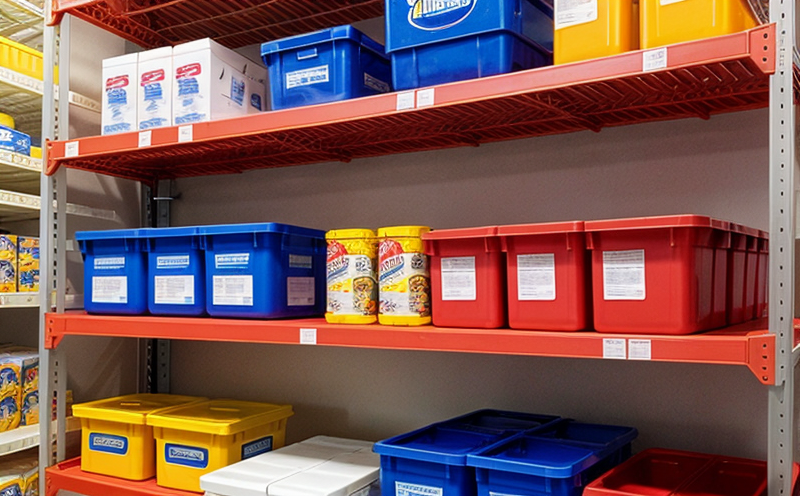Shelf Life & Stability Testing
In the food and feed industry, ensuring product quality over time is paramount. Shelf life testing and stability testing are critical components of this process. These tests help ensure that products maintain their safety, nutritional value, and sensory properties throughout their intended shelf life.
Shelf life testing involves evaluating a product’s characteristics and performance under storage conditions to determine how long the product can be stored before it starts to degrade or lose quality. Stability testing focuses on the chemical, physical, and biological changes that occur over time in products like food items, feeds, and pharmaceuticals.
Understanding these tests is essential for manufacturers who want to ensure compliance with regulatory standards and maintain consumer trust. The primary goal of shelf life and stability testing is to provide data that helps businesses make informed decisions about the optimal storage conditions, packaging, and labeling of their products.
From a technical standpoint, this service encompasses a range of methodologies designed to simulate real-world storage conditions, measure changes over time, and predict how long a product can remain stable. This testing is particularly important for perishable goods like dairy products, meats, and fresh produce, as well as shelf-stable items such as canned foods and dried feeds.
Shelf life and stability tests are conducted using controlled environments that mimic various storage conditions. These include temperature, humidity, light exposure, and even the presence of oxygen. The specimens used in these tests can vary widely depending on the product type but typically include samples drawn from production batches or purchased commercially.
The results of shelf life and stability testing are crucial for several reasons:
- They help determine optimal storage conditions to extend product longevity.
- They aid in identifying the best packaging materials that prevent spoilage and maintain freshness.
- They provide insights into the impact of temperature fluctuations on product quality.
- They assist in formulating accurate labeling for expiration dates and use-by times.
Scope and Methodology
| Test Parameter | Description |
|---|---|
| Temperature Stability | Assesses the effect of temperature variations on product quality over time. This involves exposing samples to different temperatures and measuring changes in chemical composition, sensory properties, and microbial activity. |
| Humidity Influence | Evaluates how varying humidity levels affect product integrity and nutritional content. High humidity can lead to mold growth or increased moisture content, while low humidity may cause dehydration or texture changes. |
| Oxygen Penetration | Tests the permeability of packaging materials to oxygen, which is critical for products sensitive to oxidation. This test helps in selecting appropriate barriers that can extend shelf life by preventing spoilage and rancidity. |
| Light Exposure | Evaluates how exposure to light affects product stability. This includes assessing the impact of ultraviolet (UV) radiation on color, texture, and flavor changes in products like beverages or dairy items. |
The methodology for shelf life and stability testing involves a series of controlled experiments designed to simulate real-world conditions. These tests are conducted using advanced analytical instruments capable of measuring subtle changes in product composition. Examples include gas chromatography, high-performance liquid chromatography (HPLC), Fourier transform infrared spectroscopy (FTIR), and microbiological assays.
For instance, when testing for temperature stability, samples are stored at various temperatures over extended periods while being monitored for physical alterations such as melting points or changes in viscosity. Similarly, humidity influence tests involve exposing specimens to different humidity levels and observing the effects on texture, color, and flavor.
The results of these tests provide critical data that can be used to enhance product formulations, improve packaging choices, and ensure compliance with international standards such as ISO 6878 for temperature stability testing or ASTM D2388 for humidity resistance.
Benefits
- Enhanced Product Quality and Safety: Ensures that products remain safe and of high quality throughout their shelf life, thereby protecting consumers from potential health risks.
- Improved Packaging Design: Helps in selecting the most appropriate packaging materials that can effectively protect against environmental factors like temperature and humidity.
- Extended Shelf Life: Provides valuable insights into optimizing storage conditions to maximize product longevity, reducing waste and increasing profitability.
- Regulatory Compliance: Ensures adherence to stringent food safety regulations by providing verifiable data on product stability over time.
- Informed Consumer Expectations: Accurate labeling of expiration dates based on scientific testing results builds consumer trust and confidence in the brand.
The benefits extend beyond just internal operations; they also impact the broader supply chain, from raw material sourcing to final distribution. By leveraging shelf life and stability testing, companies can streamline their supply chain processes, reduce costs associated with spoilage, and enhance overall operational efficiency.
International Acceptance and Recognition
The food and feed industry operates in a globally interconnected market. Therefore, ensuring that shelf life and stability testing is conducted according to international standards is crucial for obtaining recognition from regulatory bodies worldwide.
ISO (International Organization for Standardization) and ASTM International are two leading organizations that set the benchmarks for shelf life and stability tests. Compliance with these standards ensures that test results are universally accepted, enhancing market access and fostering trade between countries.
For instance, ISO 6878 specifies the principles and practices for testing the temperature stability of food products, while ASTM D2388 provides guidelines for measuring humidity resistance in packaging materials. These standards provide a common framework that facilitates consistent quality assessments across different regions.
Besides these international bodies, regional organizations such as the European Union (EU) and the Food Standards Australia New Zealand (FSANZ) also recognize shelf life and stability testing conducted according to internationally accepted protocols. This acceptance is vital for exporters who need to comply with varying national regulations while maintaining consistent quality standards.
By adhering to these global standards, businesses can ensure that their products meet the highest safety and quality benchmarks, thereby gaining a competitive edge in the international market. This not only enhances brand reputation but also fosters long-term relationships with customers and suppliers across borders.





